2022 Lexus NX 350h Limited review
Words: Peter Louisson | Photos: Tom Gasnier
Many like the idea of the NX450+ PHEV because it offers both low emissions and extended range. What about the hybrid NX from Lexus then?
Recently we checked out the top version of the new Lexus NX, the 450h+ F Sport, costing just under $108k. That’s a plug-in hybrid with an 18kWh battery pack capable of around 80 urban km as an EV. And so you need to charge it overnight to access its greenest running mode.

What say you don’t have access to home charging or don’t want to have to plug in? There’s another electrified option in the form of the NX350h you see here. This is the Limited variant, AWD like the 450h+. There’s also a base model which is a front driver. Respectively, they cost $101,900 and $92,700, and both are rated at 5.5L/100km. They’re lighter than the PHEV too, and can be encouraged to run for short distances on EV power alone, especially around town, the engine replenishing the battery via the generator on the go.

These, like the 450h+, have a more than acceptable touring range of around 800km, roughly double what you’ll get out of any EV. On the other hand, none is emissions free, though the 450h+ comes closer.

What’s new in the second-gen NX? To summarise, almost everything. The range is now fully electrified because that’s what folk want. They’d probably buy a BEV version too if it were available. Currently, there’s only the UX300e. The firm’s first truly bespoke EV, the RZ450e, sized between the NX and RX models, is due here next year.

Underpinning the NX is the Global Architecture K (GA-K) platform, adding physical size and interior volume, both for humans and their cargo. All critical measurements are up slightly, the tracks out by 35-55mm depending on model, and the wheelbase extended by 30mm. Cargo space with five seats is 520L, up from 475L previously, and expanding to 1411L with seats folded. You can achieve this from the driver’s seat, a good party trick for the kids (when they’re outside of course), because the mechanism is electric. Or from the hold itself but it’s more stylish when done remotely. Under the floor are secret cubby holes but they’re not lined.
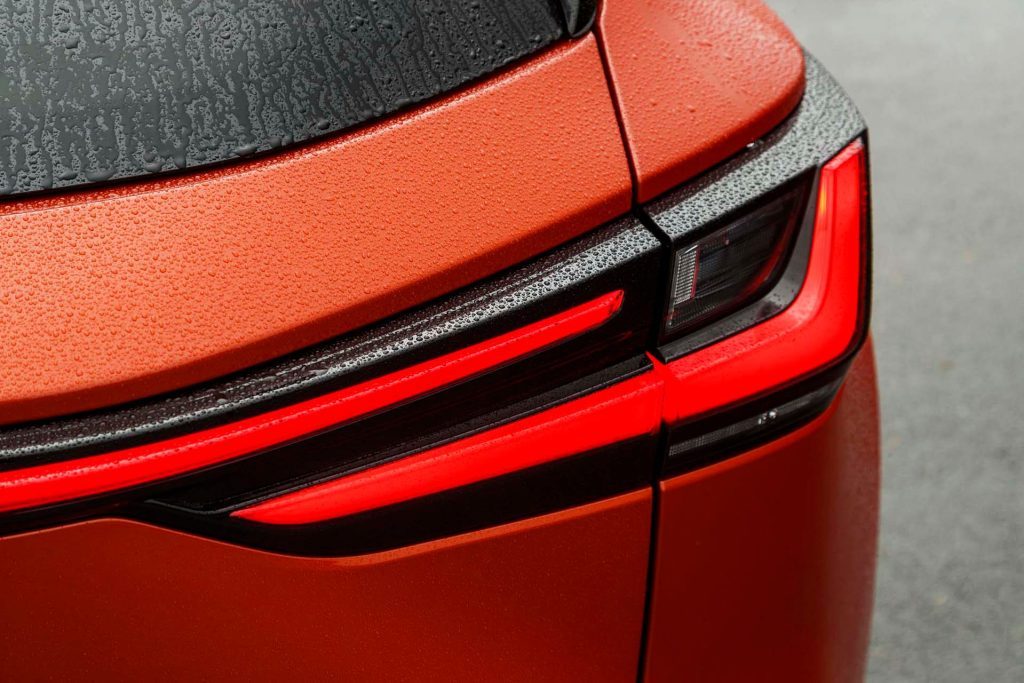
Power is up too, by 23 per cent, and torque blooms by 14 per cent, yet fuel use decreases by 12 per cent, the output divvied up according to where the electric AWD system determines it should go. Total system output is quoted at 179kW, but torque isn’t stated.
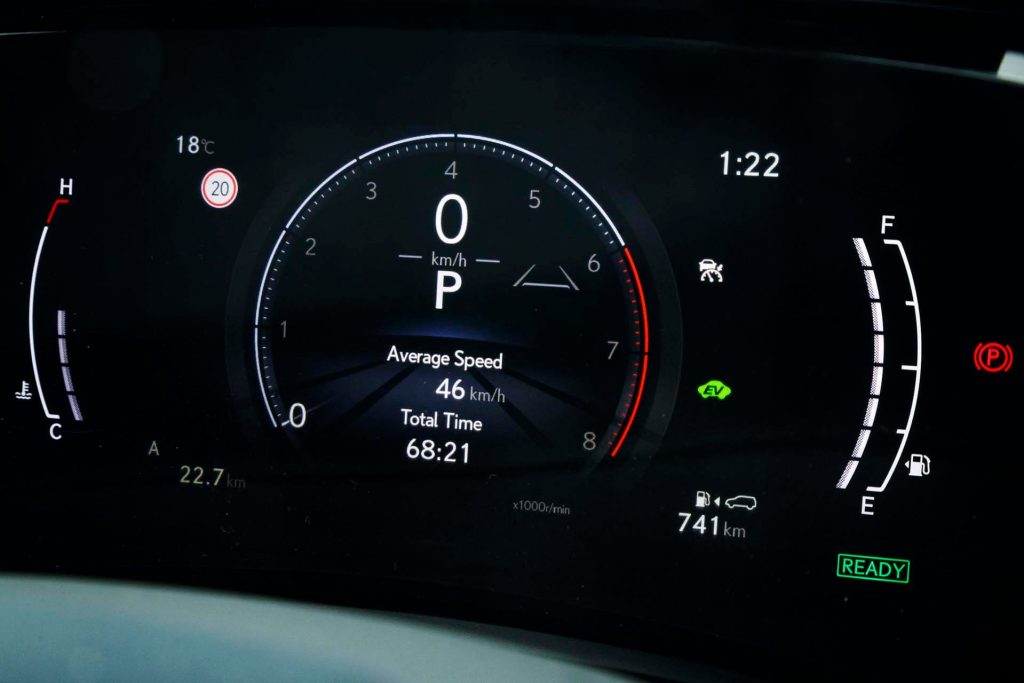
The overall shape looks more determined than before, aided by extra width in the tracks and bigger wheels. An even bigger spindle grille is attached up front, but I’ve seen bigger in the LX line-up. Faux vents at the rear mimic the real things up front, and there’s a horizontal red light strip across the fifth door, an increasingly popular motif. Lexus describes the design ethic as ‘functional beauty’ and it is a good look that also happens to slip through the air better, helping to lower fuel use.

If you admire the exterior the cabin has an even greater wow factor. All the controls are facing towards the driver and the switch count has almost halved. Conspicuous by its absence is the Lexus touchpad system, much disliked by most because of how tricky it was in use, especially for non-lefties. Anyhow, the idea is to limit distractions. Pleasingly, much of it is laid out in the HUD set-up so you can mess with settings while literally not diverting your eyes from the road. Even the height adjustment for the HUD is right there, not buried in some touchscreen submenu. Much of the set-up stuff can only be done at a standstill.

The infotainment screen is enormous at 14 inches, with shortcuts to nav, phone, media, vehicle settings and the like. But stuff you use a lot remains on a switch, such as Drive modes, limited nicely to Eco, Normal and Sport. It’s all so grown up and sensible.

Underneath all this is a new chassis, similar to RAV4’s. It employs a fixed suspension set-up and it really does deliver the most sumptuous ride experience, without letting down the dynamic side of the equation. Even the steering weight seems about right. Round town this is plush, quiet, the engine subdued, and it’s often EVing, though any real pressure on the gas pedal has the engine cutting back in again. Like most hybrids, this runs a small 1.1kWh battery, a lithium-ion one but, for greater energy density and more EVing.


Out in the boonies, and it’s still such an impressive ride, while the AWD grip and independent brake nipping both ends mean it never really sets a foot wrong. The 20-inch low profile rubber over the 18s on the base NX350h helps. You can watch on screen in the AWD section as to which axle the power is being sent to. Push too hard into a bend and it will brake the inside front to help keep it on line, but also the inside rear if you’re taking to it with a big stick. And yet it never feels like full scale intervention, just sufficient to keep the show on track.

This is an executive express if ever there was one, the only foible being the engine revving away at times, the eCVT allowing it to do so as it accelerates up to whatever speed you’re chasing. Inside, SPLs are reassuringly low, around the mid 60s, and even over relatively fresh chip seal we never saw anything north of 68.4dB. That’s pretty impressive stuff, given the quality rubber it’s running.

And run this can too, just beating its quoted 0-100 time of 7.7sec, and an overtake dusted in 5.6sec. It’s supposedly a second quicker on the sprint time than the base model because of the extra motor on the rear axle. We liked its Sport mode, a bit spicier than Normal without going silly.
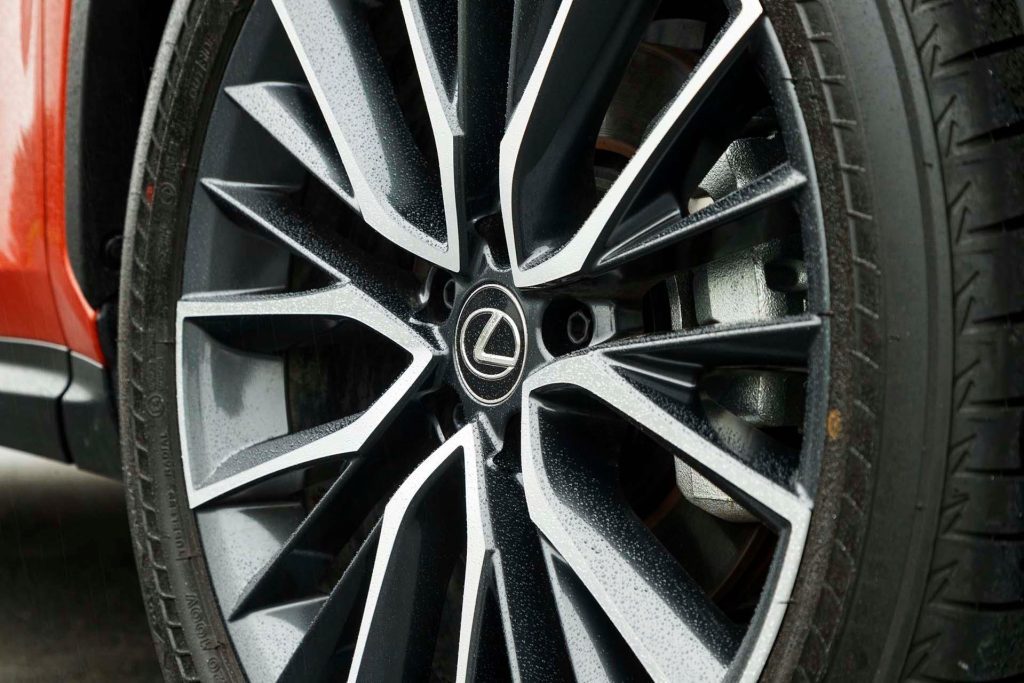
Regenerative braking has improved over time, and this machine has some serious stopping power, the pedal all but uncorrupted by its dual tasks. Most emergency stops were around the 35m mark, the best a 33.7m effort. It really does haul down and not having a monster battery pack helps; at just under 1790kg this not only feels lightweight compared with the average electric SUV but it also feels nicely balanced front to rear, partly explaining why it also handles in a predictable easy-going manner.

Special features this has plenty of, like the electric door latches (they feel much better to use from the inside than out), and a lane trace system that’s new to the already replete Lexus Safety System+. A button on the new comfy-as steering wheel nixes the lane tracing easily if you don’t like fighting with the wheel. Lane keeping does have its place though, in heavy traffic and the like.
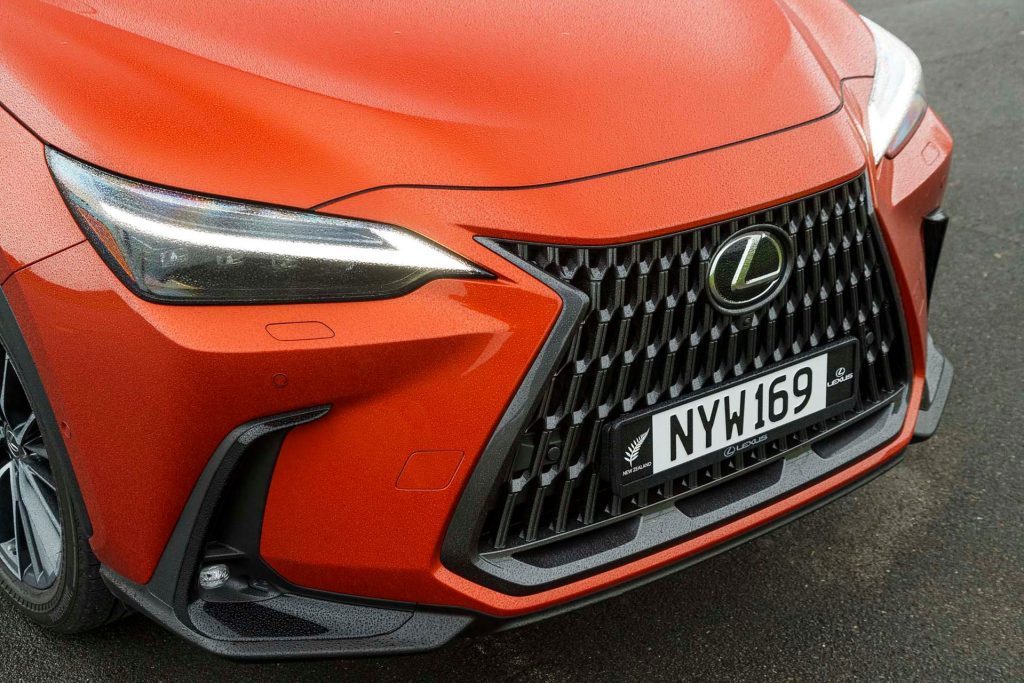
There’s also new software to stop intersection prangs. Blind spot monitoring extends to prevent inopportune door opening.
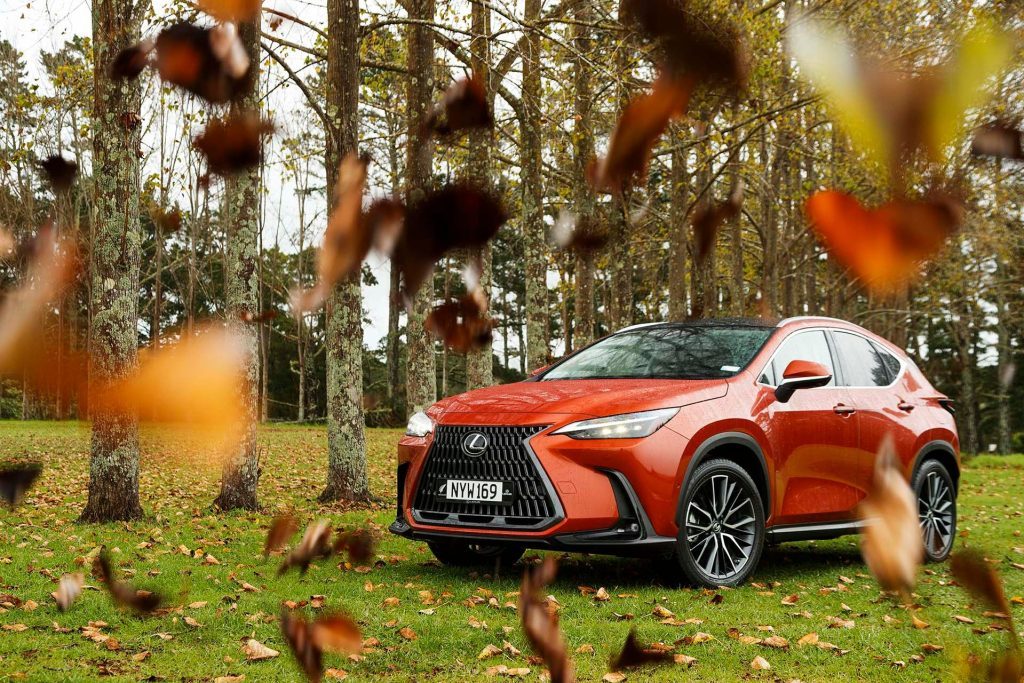
Over and above the base model, this gets adaptive headlights, surround view cameras, auto parking, lovely Mark Levinson audio, better configured seats, customisable interior lighting and a few minor trim differences like black oak inlays. Rear seat occupants will appreciate the heaters.
And being a Lexus it has that hewn-from-stone build feel about it which makes the $101,900 ask even easier to justify.
| Model | Lexus NX 350h Ltd |
| Price | $101,900 |
| Clean Car Discount | Neutral $0 |
| Engine | 2487cc, IL4, DI |
| Power/Torque | 140kW/239Nm |
| Hybrid Output | 179kW |
| Battery | 1.1kWh |
| Drivetrain | e-CVT, AWD |
| Fuel Use | 5.5L/100km |
| C02 Output | 126g/km |
| 0-100km/h | 7.59sec |
| 80-120km/h | 5.56sec (159.2m) |
| 100-0km/h | 33.72m |
| Stability systems | ABS, ESP, TV |
| Safety | AEB, ACC, BSM, LDW, RCTA, ALK, AHB |
| Luggage Capacity | 520-1411L |
| Tow rating | 750kg (1500kg braked) |
| Service intervals | 12 months/16,000km |
| Scheduled servicing | 4 years/unlimited km |
| Warranty | 4 years/unlimited km |
| ANCAP rating | 5 stars (2022) |
| Weight | 1790kg (claimed) |





